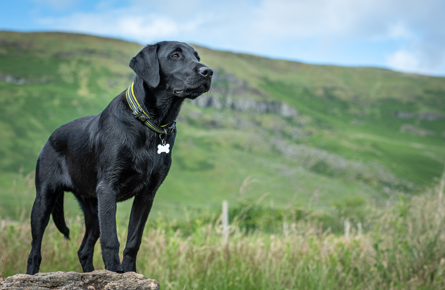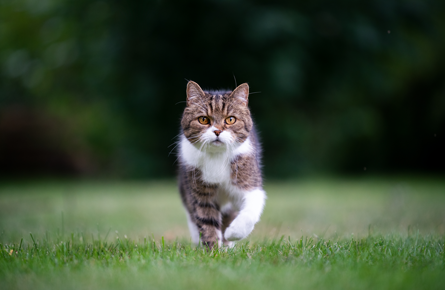In the UK, it is now required that dogs be microchipped and have their information updated. We advise that cats be microchipped as well, even though it is only required for dogs in the UK. If your pet disappears, microchipping them might help you find them again.
What is Microchipping?
Microchipping is a permanent ID system, which involves a chip, no bigger than a grain of rice being implanted under the skin of your pet’s scruff. It's a relatively quick and painless procedure.
Each microchip has a unique number, which can be read by a portable scanner, which most vets, including all Boundary vets clinics, local authorities and rescue homes have access to; ensuring your contact details can be easily obtained from the central microchipping database. Once your pet has been scanned and identified by their microchip, a simple phone call can reunite you with your pet.
Book a pet microchipping appointment
Every microchip has a distinct code that is exclusive to the animal in which it is implanted. A microchip scanner can read the unique code. Owner contact details and animal identifying data are entered into the Microchipping database once the chip has been inserted. In order to assist in reuniting missing dogs with their owners, veterinarians will be able to view and save the information here. Reuniting missing dogs with their owners is made possible by keeping the database updated with any changes to contact information.
Which Animal Need Microchipping?
In addition to dogs, the staff at Boundary Veterinary Clinic strongly recommends microchipping for cats, rabbits, and many other animals. The microchipping of all dogs and the vaccination of all pups by the age of eight weeks prior to the transfer of ownership from the breeder are now mandated by law. Failure to microchip your dog might result in a fine of up to £500.00. Keep in mind that your pet has to be microchipped and have an Annual Health Certificate if you intend to travel overseas.
Microchipping Your Pet at Boundary Vets
Microchipping is a quick and painless procedure that doesn't require sedation. A tiny microchip, smaller than a grain of rice, is inserted under your pet's skin. This chip assigns your pet a unique number, readable by a handheld scanner.
If you're uncertain about your pet's microchip status, we can easily check using a scanner at one of our Boundary Vets clinics in Oxford. We always verify that a pet doesn't already have a microchip before implanting a new one.
At the time of microchipping, you'll need to complete a registration form, which our team will submit to a national database. Your contact information will be stored on this database for your pet's lifetime, and the registration fee is included in the microchipping cost.
It's essential to keep your contact details up-to-date on the database. All our microchips comply with international standards (ISO), making them compatible with scanners worldwide and suitable for the Pet Passport scheme.
For more information or to schedule an appointment, please contact your nearest Boundary Vets practice.








